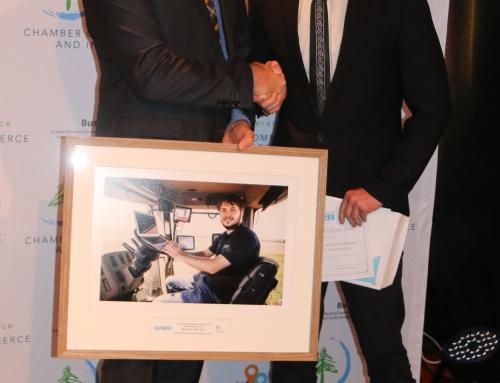Getting on track with precision agriculture
Posted: 24th May 2019 by Peter Clifton (South West Catchments Council) – Available here
Precision Agriculture (PA) aims to optimise management and improve sustainability, but for many farmers, the range of tools and data handling issues result in a large degree of uncertainty about how and where to start.
This fog was lifted at the Society of Precision Agriculture Australia (SPAA) workshop in Dumbleyung this year where farmers were given the opportunity to hear from their peers and experts about PA success stories and lessons learnt.
One of the more experienced practitioners was SPAA committee member Mark Branson who travelled from Stockport in South Australia. Mark described how he started yield mapping in 1997 but struggled to make sense of it all.
“I got some nice coloured maps that showed us where yield was, but so what? It didn’t tell us how to change our farms or make money,” Mark said.
Mark recalled one of his earliest lessons was learnt during his Nuffield scholarship when he realized he was trying to fit new technology into his system for the sake of it, rather than selecting technology to solve problems.
“Once I started to look at my agronomic problem first and finding the best tool or technology to solve it, I started to make money out of precision ag.”
One of Mark’s problems was dealing with phosphorus deficient soils by applying blanket applications across the whole farm. A solution came from an international fertiliser representative who said one of the easiest ways to start a variable rate program was to determine phosphorus removed by crops in one year and use that figure for phosphorus application in the following year.
“When you harvest a crop you harvest phosphorus as well. So I started to use my yield map for phosphorus-replacing. I use SMS® Advanced to convert my harvest map into a phosphorus application map. This has lowered my phosphorus usage because it gave me the confidence to drop rates without compromising yields, especially in the higher yielding areas of the paddocks.”
But Mark says nitrogen is a trickier beast to work with.
“With no-till farming my nitrogen mineralisation rates were better than what calculators suggested, and I got tired of people telling me I needed a certain rate.”
Mark now uses nitrogen-rich strips to calibrate nitrogen use.
“The way it works is you apply excess nitrogen to a very small strip early in the crop’s life and use a GreenSeeker® to compare biomass in the strip to the rest of the paddock. If the strip has the same NDVI (Normalised Difference Vegetation Index) as the rest of the paddock, why apply nitrogen?”
Mark uses this information to vary the rate of nitrogen according to the canopy density using CropSpec sensors.
“It has given me the confidence not to apply nitrogen when the crop doesn’t need it. I have saved a lot of nitrogen this way because before that I was over-applying.”
Mark has also saved nitrogen by using moisture probes.
“I bought my first batch of probes ten years ago and another batch five years ago. Prior to that we got caught when things looked fantastic on the ground but there wasn’t any moisture underneath to feed the above-ground potential later in the season. So probes are a great tool come nitrogen-time in late winter/ spring.”
Fellow SPAA committee member Phil Honey from Environmental and Cropping Technologies Australia was one of many service providers to speak at the event.
“One of the biggest problems when you get started is having access to support. There is nothing worse than dealing with an overseas company that doesn’t have anyone in Australia when you have a question,” Phil said.
He encouraged farmers to start by collecting yield maps, even if they aren’t planning to process them.
“It’s a lot easier to make something using three years of data rather than a single year. You can start identifying zones within paddocks and whether the variation in yield is seasonal, nutritional or environmental or even if it is manageable. Then look into strategic soil sampling, preferably at depth,” Phil added.
Satellite imagery services, available through a variety of paid or free options, can also help to show how things change. However, Phil pointed out that high NDVI does not always equal high yield.
Phil also had plenty of great tips about how to choose the best platform and delivery method (computer versus cloud), including internet access, compatibility with machinery and GPS brands already used on the farm, and flexibility for future growth in precision agriculture.
Attendees walked away with more knowledge and ideas on how to start with PA to build a more sustainable business.
This event was supported by the South West Catchments Council, though funding from the Australian Government’s National Landcare Program.

Mark Branson (left) and Phil Honey at SPAA’s Dumbleyung workshop. – Picture courtesy of Peter Clifton – South West Catchments Council
About Environmental & Cropping Technologies Australia:
Environmental & Cropping Technologies Australia supports Precision Agriculture and Environmental Management companies throughout Western & Southern Australia, with the provision of high-quality data processing and technical services. Our qualified team can effectively process yield maps, elevation data, biomass data and imagery, and help you make educated decisions in improving your agricultural or environmental enterprise through the use of technology.






Leave A Comment
You must be logged in to post a comment.